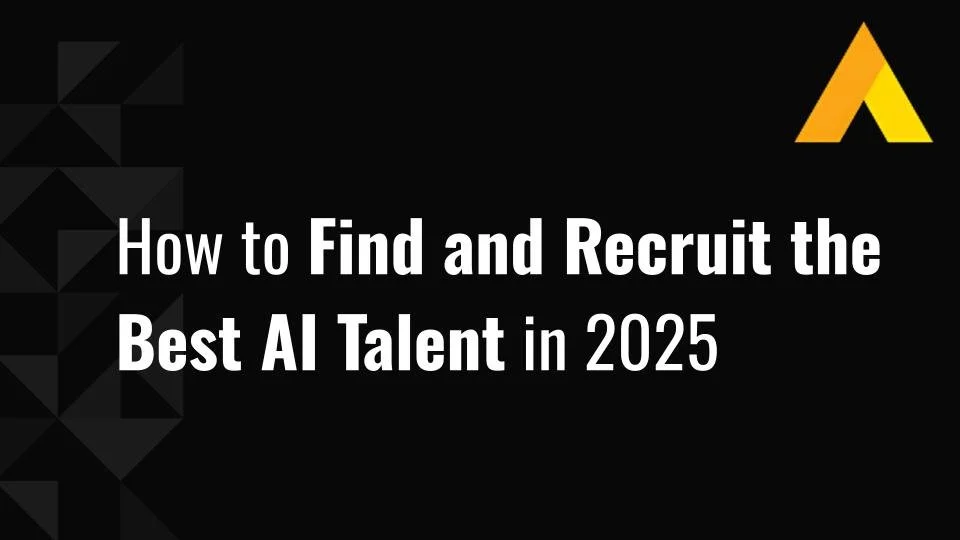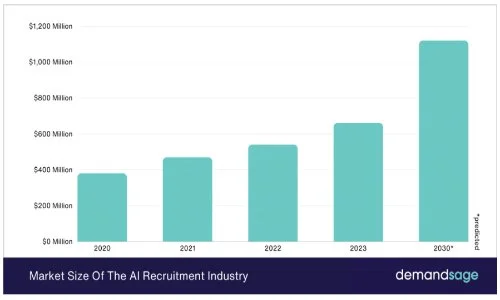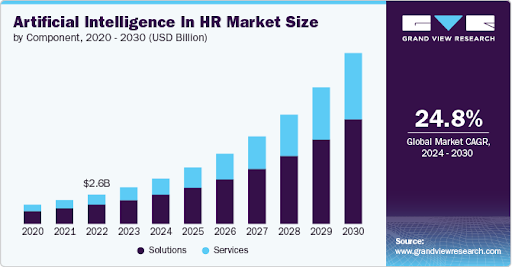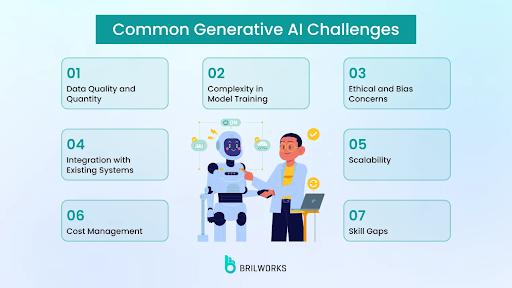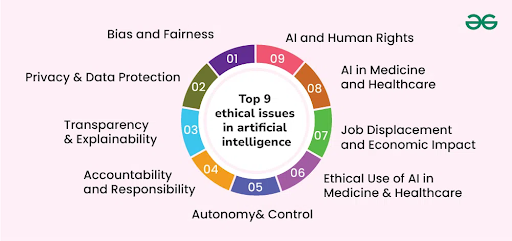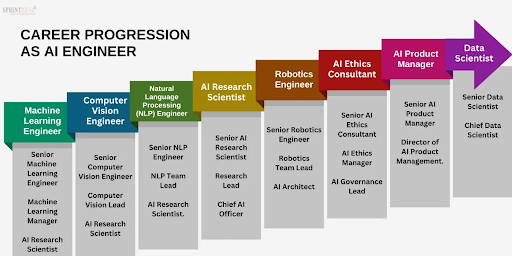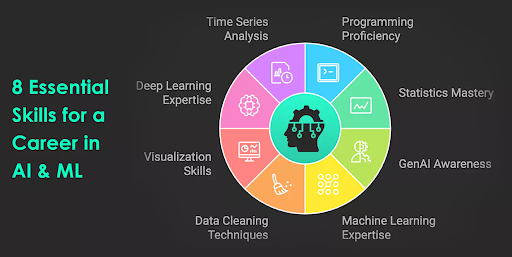How to Find and Recruit the Best AI Talent in 2025
Finding AI talent is harder than ever.
The demand for AI-powered solutions keeps growing, but the pool of applicants with the right candidate skills is limited. To succeed, you need a proactive recruitment strategy that cuts through the noise and brings in best-fit candidates before competitors do.
This guide shows you how to refine your recruitment process, take advantage of the right tools, and build a pipeline of top AI professionals.
Keep reading to optimize your hiring journey and secure the talent your business needs.
Why Hiring the Right AI Talent Matters
Hiring the right AI professionals isn’t just about filling roles. It determines how well your company leverages AI-powered tools to drive innovation and efficiency.
1. Avoiding AI Implementation Failures
AI systems need experts who understand natural language processing and machine learning. A weak hire can lead to misaligned models, unreliable job recommendations, and wasted valuable time.
2. Reducing Human Biases in AI Systems
AI models reflect the data they process. Without skilled oversight, they can amplify human biases and lead to ethical and legal risks, damaging a company’s positive reputation.
3. Maximizing AI-Driven Automation Without Losing Human Judgment
AI automates complex tasks, but it requires the right professionals to balance efficiency with human capabilities for critical decision-making.
4. Building a Scalable Talent Pipeline
Strong AI hires contribute to sustainable sources of talent, helping your company attract and retain skilled candidates, even in a competitive market.
5. Gaining a Competitive Edge Through AI-Driven Insights
The right hires generate candidate analytics that optimize business strategies, refine models, and create high-value AI applications.
Key Trends in AI Hiring in 2025
AI hiring in 2025 is evolving fast, and the AI recruitment market has grown rapidly, projected to reach more than $1 billion by 2030.
Companies are using recruitment software to refine the hiring process, but competition for skilled candidates remains intense.
1. Skills-Based Hiring Over Degree Requirements
Employers prioritize job requirements over formal degrees. Candidates need a portfolio proving expertise in AI model development, natural language processing, and data engineering.
2. AI-Assisted Recruiting for Smarter Talent Matching
Companies are increasingly relying on AI-assisted recruiting and applicant tracking systems to analyze job candidate pools and match professionals based on real-world performance rather than static resumes.
3. Stronger Emphasis on Ethical AI Practices
Businesses require AI professionals who understand potential biases in machine learning models. Ethical oversight is a priority to prevent flawed decision-making and maintain candidate satisfaction.
4. Automating Repetitive Tasks Without Losing Human Oversight
AI streamlines candidate sourcing, candidate screening, and interview scheduling, but companies need professionals who ensure human oversight at critical decision points.
5. Internal Mobility for AI Professionals
Companies are focusing more on internal mobility to upskill existing employees rather than constantly searching for external hires. Expanding AI capabilities within teams can reduce hiring costs and improve retention.
Which AI Jobs Are in High Demand in 2025?
In 2025, the demand for artificial intelligence (AI) professionals has surged, which reflects the technology's expanding role across various industries. But which specific jobs are in high demand? Let’s find out.
1. Machine Learning Engineers
Machine Learning Engineers design and implement algorithms that enable machines to learn from data. Their expertise is crucial for developing predictive models, candidate assessment, and AI-powered automation processes.
2. Natural Language Processing (NLP) Specialists
NLP Specialists focus on the interaction between computers and human language, enabling applications like chatbots and job search assistants. Their skills are essential for creating systems that understand and generate human language, a capability increasingly sought after in candidate engagement and content creation sectors.
3. AI Product Managers
AI Product Managers serve as the bridge between technical teams and business stakeholders, ensuring that AI-driven products align with job requirements and strategic goals. They oversee the development and deployment of AI solutions, making their role vital in translating technological capabilities into business value.
4. Computer Vision Engineers
Computer Vision Engineers develop systems that process and interpret visual information, such as images and videos, in real time. Their work is foundational in sectors like healthcare, where AI is used for medical imaging, and in automotive industries for developing autonomous vehicles.
5. Chief AI Officers (CAIOs)
As organizations integrate AI into their operations, the role of Chief AI Officer has emerged to lead aspects of talent acquisition, AI strategy, implementation, and governance. CAIOs ensure that AI initiatives align with business processes and ethical standards, leveraging Oracle Recruiting and recruiting features to build high-performing AI teams.
These roles highlight the diverse opportunities within the AI field, each contributing uniquely to the development and application of AI technologies across various sectors.
How to Find and Recruit the Best AI Talent in 2025 — 7 Best Practices
Scheduling interviews is the easy part. The hard part is setting up a process for candidates, identifying skill gaps, and optimizing your entire talent acquisition process.
1. Prioritize Candidates with Proven AI Project Experience
When it comes to AI, practical experience often outweighs formal education. While a degree provides foundational knowledge, hands-on experience with AI-powered tools, model deployment, and real-world problem-solving is crucial. Talent leaders are increasingly prioritizing candidates who demonstrate their skills through tangible projects.
Platforms like GitHub and Kaggle serve as valuable repositories to showcase your ideal candidate's practical abilities. For instance, GitHub hosts numerous projects where AI enthusiasts contribute to real-world applications, reflecting their proficiency in coding and problem-solving. Similarly, Kaggle competitions provide a stage for data scientists to tackle complex challenges, allowing them to apply theoretical knowledge to practical scenarios. This is great for efficient hiring because you can assess skill gaps and get solid talent matches.
Engaging on these platforms not only refines a candidate’s skills but also shows you that they’re ready to handle real-world AI challenges beyond routine tasks. This emphasis on demonstrable skills aligns with the growing trend of skills-based hiring. In fact, 75% of companies are moving toward hiring based on skills, with over 40% now prioritizing skills over formal degrees. The point is for human recruiters to be able to make informed decisions.
2. Use AI-Powered Screening Tools for Smarter Evaluations
Traditional resumes often provide limited insights into a candidate's true capabilities, especially in a field as dynamic as artificial intelligence. To address this, many companies are adopting AI-powered screening tools that give deeper insights into applicants' qualifications. These recruitment tools analyze vast amounts of data, including project contributions and coding performance, offering a more comprehensive view of a candidate's potential.
That way, you get more data-driven insights that you would by simply reading online profiles on job boards. And you can make sure you're hiring quality candidates. Besides, AI tools make it easier to sift through potentially millions of candidates.
Notably, 88% of companies globally have integrated some form of AI technology into their HR processes, reflecting a significant shift towards automation in recruitment. The graphic below shows how quickly this market has grown.
The benefits of implementing AI in recruitment are substantial. For instance, Hilton Worldwide used AI-driven tools to evaluate candidates, resulting in a 90% reduction in their time-to-fill ratio and a 40% improvement in hiring rates. This efficiency stems from AI's ability to swiftly process and assess candidate information, which allows recruiters to focus on more strategic aspects of the hiring process. Moreover, 67% of hiring decision-makers cite time-saving as the primary advantage of using AI in recruitment, which highlights its role in streamlining operations.
You can also use talent CRMs to send emails to candidates, prioritize potential employees by candidate experience or administrative tasks, or implement peer recognition.
However, it's still important to approach deep integration of AI thoughtfully. While AI can improve efficiency, there are concerns about potential biases and the exclusion of unconventional talent. Approximately 35% of recruiters worry that AI may overlook qualified candidates with unique skills and experiences. So AI, is not a standalone solution. You need a balanced approach that combines AI's analytical strengths with human skills like emotional intelligence if you want a fair and effective hiring process.
3. Test for Problem-Solving, Not Just Coding Ability
In the realm of artificial intelligence, coding proficiency is just the starting point. To truly excel, AI professionals must demonstrate robust problem-solving abilities that encompass optimizing algorithms, mitigating human biases, and developing scalable models aligned with business objectives. This skill set allows them to develop AI solutions that are both effective and ethically sound.
A critical aspect of problem-solving in AI involves addressing inherent biases within datasets and algorithms. For instance, studies have revelead that facial recognition systems exhibit higher error rates for darker-skinned individuals compared to lighter-skinned individuals, primarily due to unrepresentative training data. Such disparities underscore the necessity for AI professionals to proactively identify and rectify biases, ensuring equitable outcomes across diverse populations. The image below shows some more common challenges with AI.
Moreover, the scalability of AI models is a key factor in meeting evolving business demands. AI professionals must design models capable of handling increasing data volumes and complexity without compromising performance. This requires a deep understanding of both the technical aspects of AI and the strategic goals of the organization.
4. Look for Expertise in AI Ethics and Compliance
It's imperative for AI professionals to possess a deep understanding of ethical AI practices, regulatory considerations, and strategies to mitigate bias in data models. This expertise will help AI applications comply with legal standards and uphold societal trust and fairness. The image below shows some common ethical concerns around AI. If you want to create an inclusive workplace, keep in mind these key differences between AI and human intelligence.
The significance of AI ethics is underscored by recent developments in regulatory frameworks. For instance, the European Union's AI Act Checker has revealed compliance challenges among major tech companies, which highlight the necessity for robust ethical standards in AI development. A 2023 Reuters/Ipsos poll found that 61% of Americans agree that AI poses risks to humanity, reflecting public concern over AI's ethical implications.
More and more organizations are recognizing the importance of integrating ethical considerations into their AI strategies. For example, SAP established an AI Ethics Advisory Panel in 2018 to address current and future ethical issues in AI applications. This proactive approach safeguards against potential biases and ethical pitfalls ans also aligns AI initiatives with broader societal values. When recruiting AI talent, it's crucial to assess candidates' proficiency in ethical AI practices and their ability to implement compliance measures effectively.
5. Target Passive Candidates with Personalized Outreach
Engaging passive candidates — those not actively seeking new opportunities — is a key strategy in the AI talent market. It’s worth noting that 70% of the global workforce comprises passive talent. To connect with these professionals, making use of intelligent search and crafting personalized candidate outreach strategies are essential.
Intelligent search uses AI-driven recruiting tools to analyze extensive datasets from platforms like LinkedIn and GitHub, to identify AI professionals whose skills align with your organization's needs. This approach allows recruiters to pinpoint candidates who may not be actively job hunting but have the desired expertise. For instance, AI can assess a candidate's online activity to determine their openness to new opportunities, which leads to more precise searches.
Once potential candidates are identified, personalized candidate outreach becomes vital. Generic messages often fail to engage passive candidates. Instead, AI tools can write tailored communications that resonate with an individual's career trajectory and interests.
Research indicates that personalized emails have a 29% higher open rate and a 41% higher click-through rate, underscoring the effectiveness of this strategy. By addressing specific achievements or aligning the opportunity with the candidate's career goals, you demonstrate genuine interest and boost the likelihood of a positive response.
Incorporating AI into your recruitment process streamlines the identification of passive candidates while improving engagement through personalized communication. This dual approach gives you access to a broader and potentially more qualified talent pool and helps connect with more top AI professionals.
6. Offer Career Growth and Continuous Learning Opportunities
AI professionals tend to seek out environments that foster continuous learning and career development. Providing structured career paths, access to cutting-edge research, and opportunities for hands-on experimentation gives you an advantage when attracting and retaining top AI talent.
The image below shows some potential career paths for different AI roles:
Continuous learning is not just beneficial but necessary in the AI industry. A recent article by Toxigon emphasizes that embracing a mindset of lifelong learning is necessary to staying relevant amid rapid technological advancements. Organizations that support ongoing education allow their AI professionals to adapt to new, powerful tools and methodologies and maintain their competitive edge.
Offering opportunities for hands-on experimentation is equally important. Allowing AI professionals to engage in practical projects keeps their problem-solving skills sharp and leads to innovative solutions. This experiential learning approach benefits the individual's growth and the organization's advancement in AI capabilities.
By prioritizing career growth and continuous learning, companies create an environment where AI professionals can thrive, which in turn leads to sustained innovation and success.
7. Check for Adaptability in AI Specializations
It’s important for AI professionals to demonstrate adaptability across various specializations, such as natural language processing (NLP), computer vision, and machine learning. This flexibility is crucial because AI applications often require integrating multiple domains to deal with complex challenges. For instance, developing an autonomous vehicle requires expertise in both computer vision for object detection and NLP for interpreting verbal commands.
This kind of adaptive expertise allows AI professionals to solve familiar problems while creating innovative solutions for new situations. This dual capability is essential in AI, where emerging technologies and methodologies continually reshape the landscape.
According to recent research, the demand for AI-related competencies has significantly increased, with a growing number of jobs requiring multiple AI-related skills. This trend shows the importance of adaptability when it comes to AI projects. The image below shows a few key skills that might be expected of an AI professional:
Moreover, the ability to pivot between different AI specializations gives your organization more agility when responding to market demands. As AI applications become more pervasive across industries, professionals who can seamlessly transition between domains are invaluable. This adaptability fosters innovation and ensures that AI solutions are robust, scalable, and in line with business objectives.
Common Mistakes in AI Hiring
When it comes to AI, companies often make specific hiring mistakes that can hinder their technological advancement. Recognizing and addressing these pitfalls is crucial for building a competent AI team.
1. Overemphasizing Technical Skills While Neglecting Soft Skills
Focusing solely on technical prowess (in job descriptions as well as interviews) can lead to overlooking essential soft skills such as communication and teamwork. AI professionals must collaborate effectively across departments to implement solutions that align with business objectives. All your potential hires must have the human touch. To make this happen, assess candidates for technical competencies as well as interpersonal abilities during the recruiting process.
2. Failing to Address Data Quality Issues Before Hiring
Hiring AI engineers without properly evaluating your data infrastructure can derail projects. Engineers need clean, structured data to train effective models. Before hiring, companies should assess their data readiness and discuss how the engineer plans to handle gaps or inconsistencies.
3. Ignoring the Importance of AI Ethics and Bias Mitigation
Overlooking ethical considerations and bias in AI models can lead to discriminatory outcomes. For example, Amazon built an AI recruiting tool that favored male candidates over females due to its training on a decade's worth of male-dominated resumes. To prevent such issues, make sure your AI is trained on diverse, bias-free datasets.
4. Rushing the Hiring Process Without Thorough Evaluation
Rushing through hiring to fill positions quickly can result in suboptimal hires. It's far better to conduct comprehensive evaluations, including technical skills assessments and cultural fit in your interview process. That way, your talent acquisition team can be sure all potential candidates meet all necessary criteria.
5. Neglecting Continuous Learning and Development Opportunities
Failing to provide career growth and continuous learning opportunities can lead to high turnover rates among AI professionals. To retain top talent, offer structured career pathing, access to research, and hands-on AI experimentation.
Final Thoughts
Finding top AI talent in 2025 is more competitive than ever. Companies rely on AI-powered solutions, but not all hires can build, refine, and scale them effectively.
A weak hire can introduce human biases, slow innovation, or waste resources on flawed models. A strong hire, on the other hand, delivers actionable insights, optimizes automation, and refines your AI strategy.
You need a hiring process that goes beyond resumes and identifies best-fit candidates before your competitors do.
The AI talent war is here. Are you prepared to win it?
FAQ — Succeed with AI Hiring in 2025
What is the future of AI in recruiting?
AI will continue automating tedious tasks like candidate sourcing, screening tools, and interview scheduling, allowing human recruiters to focus on high-value interactions and human judgment in hiring decisions.
What are some AI talent acquisition trends in 2025?
Companies are shifting to skills-based hiring, drawing on AI-driven tools for smarter candidate discovery, and prioritizing ethical AI practices to reduce potential biases in recruitment.
How is AI being used in talent acquisition?
AI improves the recruitment process by optimizing job recommendations, automating outreach messages, and using AI-assisted recruiting to identify best-fit candidates from job candidate pools.
How can companies stand out when hiring AI talent in 2025?
Offer strong career pathing, access to cutting-edge AI projects, and a commitment to AI ethics to attract top professionals seeking both growth and impact.

